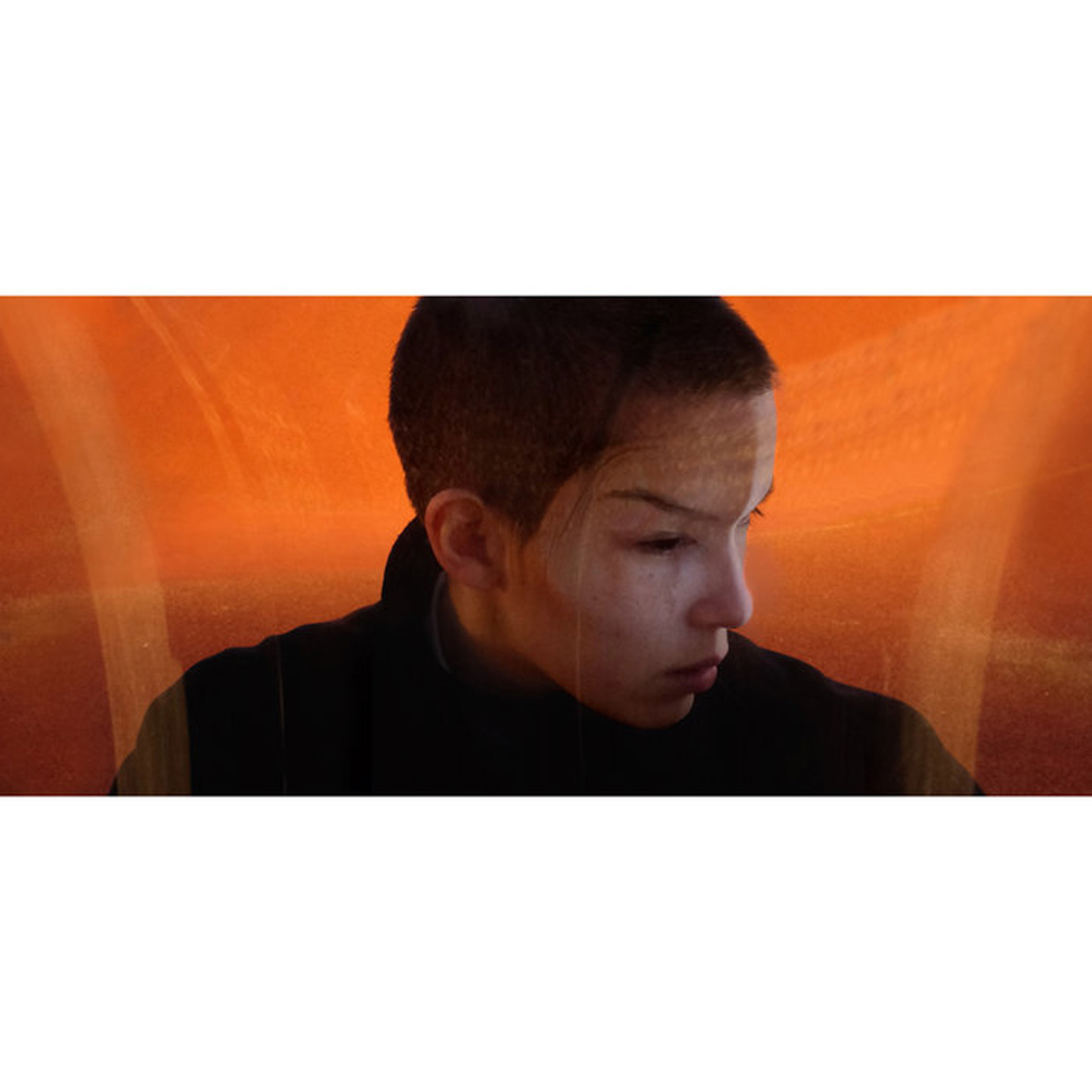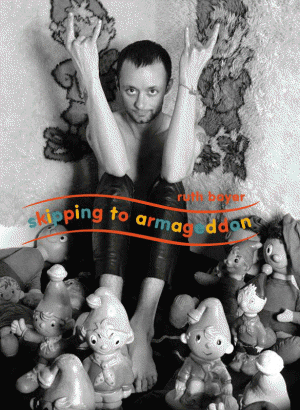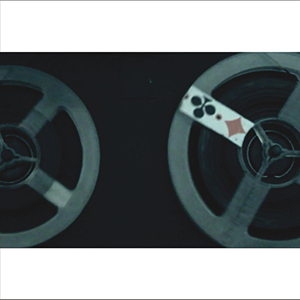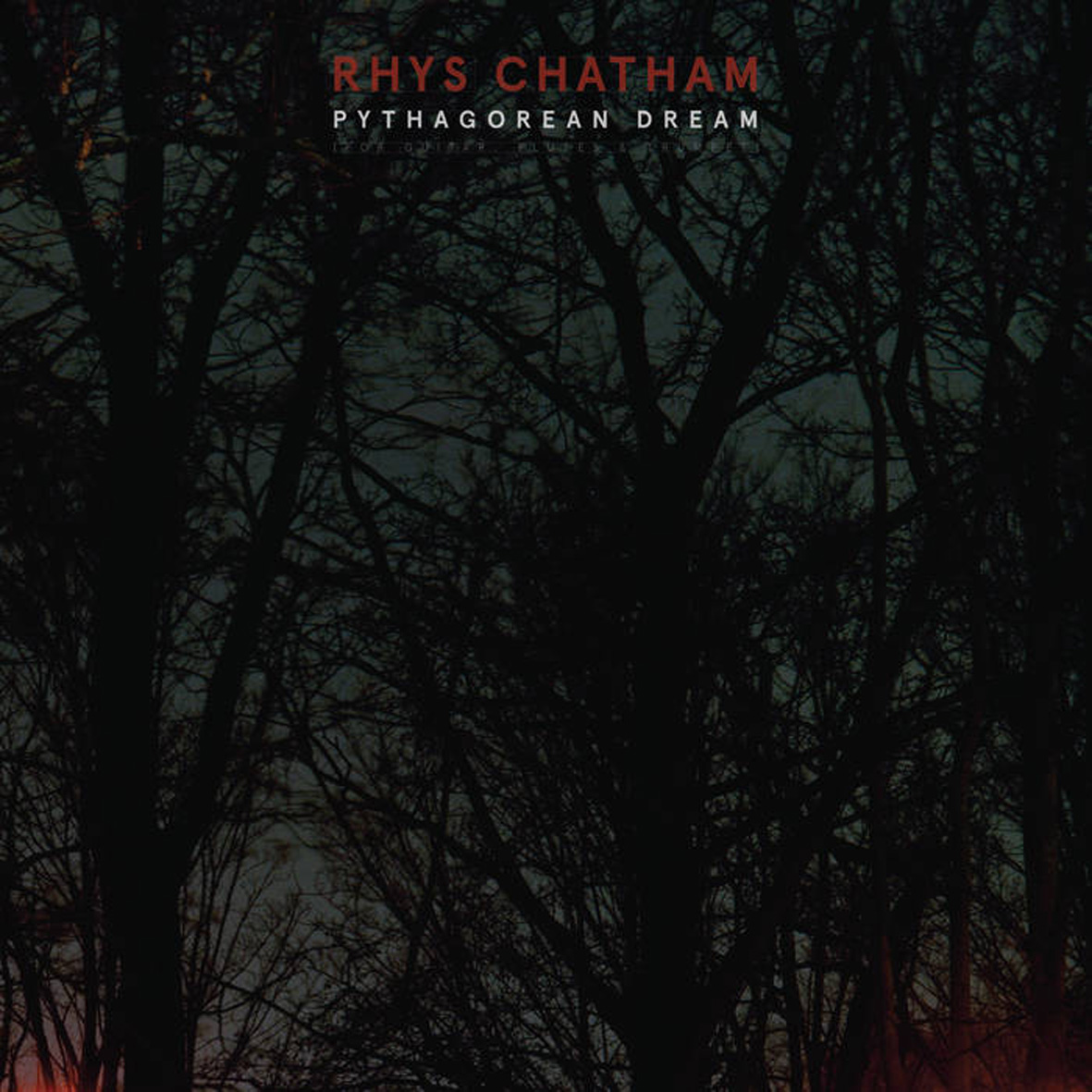- Administrator
- Albums and Singles
 Over the years, I have come to be extremely wary of any collaborative releases involving artists I like, as all they tend to fall into one of two categories: disappointing compromises or (much more frequently) tossed-off improvisations.  Consequently, I did not have particularly high hopes for this album, particularly since so many recent Fenn O’Berg releases have failed to live up to their enormous potential.  Happily, however, It’s Hard for Me to Say I’m Sorry largely delivers upon the promise heralded by its luminous participants.  Given that Fennesz has a much more distinctive aesthetic than the chameleonic O’Rourke, it is not surprising at all that this sounds a hell of a lot like a Fennesz album at times, but the line separating laptop-era O’Rourke from Fennesz is a very blurry and narrow one.  In any case, this is quite a strong album, albeit one that starts to lag a bit in the second half.
Over the years, I have come to be extremely wary of any collaborative releases involving artists I like, as all they tend to fall into one of two categories: disappointing compromises or (much more frequently) tossed-off improvisations.  Consequently, I did not have particularly high hopes for this album, particularly since so many recent Fenn O’Berg releases have failed to live up to their enormous potential.  Happily, however, It’s Hard for Me to Say I’m Sorry largely delivers upon the promise heralded by its luminous participants.  Given that Fennesz has a much more distinctive aesthetic than the chameleonic O’Rourke, it is not surprising at all that this sounds a hell of a lot like a Fennesz album at times, but the line separating laptop-era O’Rourke from Fennesz is a very blurry and narrow one.  In any case, this is quite a strong album, albeit one that starts to lag a bit in the second half.
Suspiciously, this album is divided into two longform pieces that each clock in at around twenty minutes, an arrangement that usually smacks of improvisatory origins.  If that is indeed how these pieces originated, however, Fennesz and O'Rourke definitely did a fine job covering their tracks when they edited everything together, as both "I Just Want You to Stay" and "Wouldn’t Wanna Be Swept Away" (for the most part, anyway) both feel like gorgeously lush and deliberate compositions that follow a coherent arc.  There is definitely a drone-like drifting amorphousness running throughout the entire album, but the ebbing and flowing is too effective to be purely spontaneous, as is the vibrant interplay between the various elements.
The opening "I Just Want You to Stay" begins with warm, woozy guitar swells that sometimes sound like an EBow and other times seem like pedal steel, though any sense of bliss is soon curdled by some rather grinding and dissonant textures that start to creep up through the haze.  For a while it seems like those darker elements are going to take over the piece, but they unexpectedly dissolve into a beautiful vista of lush exhalation-like chords, watery shimmer, and a tapestry of distorted guitar arpeggios that accumulate to a fuzzed-out roar.  Gradually, Fennesz makes his presence more prominent, however, as the piece coheres into a stuttering, pixelated melody that sounds like a malfunctioning synthesizer while guitar swells gently undulate in the background like passing clouds.  Throughout it all, the duo manage to strike a perfect balance between warmth, beauty, and controlled violence: the piece may be pretty, but some broken, corroded, and gnarled touches are always gnawing at its edges right up until the unexpectedly dreamy Endless Summer-esque coda of multilayered laptop heaven.
"Wouldn’t Wanna Be Swept Away" opens with a very different tone, as thick, sleepy "vintage synth" tones unfold a melancholy motif colored by gentle guitar shimmer and hiss.  Slowly, however, it transforms into more guitar-based fare, as heavily processed and ringing shoegaze-damaged arpeggios form a backdrop to O'Rourke's languorously sliding pedal steel.  In fact, it sounds a lot like two separate and artfully competing songs, as the more frenzied and distorted guitars seem to constantly threaten to eclipse the pedal steel with their engulfing roar.  That creates quite an effective tension before the entire piece seems to get sucked into a black hole of watery, burbling psychedelia.  Unsurprisingly, that does not proceed predictably either, as the more New Age-y atmosphere soon finds itself beset by some more ominous and space-y textures.  Later, it transforms yet again into something resembling a deconstructed rock song embellished by fluttering, warbling, and pitch-shifting synth tones.  I suppose it works on at least one level, as it has a definite slow-motion, fragmented, and druggy appeal, but it is a bit too meandering for my taste.  Also, O’Rourke and Fennesz do not pull an unexpected rabbit out of their hat at the end like they did with "I Just Want You to Stay."
While I like the controlled storm of guitars at the beginning of "Swept Away" quite a lot, the piece only succeeds as a collection of inspired moments rather than as a composition.  It definitely feels like Fennesz and O’Rourke had more time to fill than they had ideas with that one, as it seems like they were running out the clock a bit and allowed some themes to conspicuously overstay their welcome.  Consequently, the real meat of this album is the absolutely sublime "I Just Want You to Stay," which totally justifies the album’s existence by itself.  Aside from that, the secondary appeal of It’s Hard for Me to Say I’m Sorry lies in how simultaneously similar and dissimilar this album sounds to each artist's solo work, as it is rare treat to experience a more loose and extended strain of Fennesz's vision and Jim O’Rourke is the perfect foil for such an outing.  He is probably the perfect foil for just about any musical endeavor, actually.  While I wish the duo had spent more time perfecting the album’s second half, I suppose Christian Fennesz could not linger around Tokyo forever and a mostly great album that limps to a close is still a mostly great album.
- I Just Want You to Stay (excerpt one)
- I Just Want You to Stay (excerpt two)
- Wouldn't Wanna Be Swept Away
 
Read More
- Administrator
- Albums and Singles
 Haley Fohr's latest album quixotically departs from her Circuit des Yeux project in quite a bizarre and ambitious way.  Half performance art and half avant-garde country album, Jackie Lynn purports to be last recordings left behind by a mythic musician/iconoclast/cocaine dealer before she vanished from her apartment after a "domestic disturbance."  Fohr’s commitment to this elaborate conceit is quite impressive, concocting both a fake newspaper story and mini-documentary to support her enigmatic new persona.  As for the songs, they are a bit of a mixed bag, as Fohr's deep and powerful voice is a very uneasy fit for anything resembling popular music.  After awkwardly veering between bombast and kitsch for a few songs, however, Fohr eventually hits her stride and unleashes some compelling new twists on well-worn formulae.
Haley Fohr's latest album quixotically departs from her Circuit des Yeux project in quite a bizarre and ambitious way.  Half performance art and half avant-garde country album, Jackie Lynn purports to be last recordings left behind by a mythic musician/iconoclast/cocaine dealer before she vanished from her apartment after a "domestic disturbance."  Fohr’s commitment to this elaborate conceit is quite impressive, concocting both a fake newspaper story and mini-documentary to support her enigmatic new persona.  As for the songs, they are a bit of a mixed bag, as Fohr's deep and powerful voice is a very uneasy fit for anything resembling popular music.  After awkwardly veering between bombast and kitsch for a few songs, however, Fohr eventually hits her stride and unleashes some compelling new twists on well-worn formulae.
I have historically had a complicated relationship with Haley Fohr's art, as she seems to be prodigiously talented and incredibly restless creatively, undergoing transformation after transformation without ever seeming to be fully comfortable.  At the root of it all is her singular voice, which is both a blessing and curse, as it invariably eclipses almost everything around it.  There is a very good reason why someone like Diamanda Galas does not ever try to make a conventional rock album (well, several reasons, actually), but Fohr seems hellbent on trying anyway and is intermittently quite successful.  Jackie Lynn, unsurprisingly, is her oddest foray into that realm yet and not just because of the concept and the enormous gulf between her voice and the material.  Equally wrong-footing is the tone, as it is very hard to get a read on just how seriously I am expected to take this new direction.  At times, it seems like a very elaborate joke delivered with deadly seriousness.  Other times, it seems completely sincere (a feminist/outlaw Ziggy Stardust!) and I feel vaguely uncomfortable about finding elements of it funny.  If that vagueness and discomfort is totally intentional, then Jackie Lynn is quite an impressive bit of conceptual art, but it is just as likely that it is just a lark that unintentional offers up conflicting and confounding tones and interpretations.  Also inscrutable is the crazily overstuffed and detailed backstory, as I have no idea why someone would go through so much trouble unless they were trying to perpetuate a hoax.  Perhaps that was the original plan, but was abandoned when everyone realized that Fohr's voice was instantly recognizable.
The actual songs are similarly perplexing, as the tone veers all over the place and two of the eight songs are just hallucinatory interludes clocking in under a minute (in fact, "O" is only 8 seconds long).  I should also mention that there are cryptic sci-fi elements bubbling up throughout both the album and the documentary.  On one of the album’s strongest moments ("Alien Love"), for example, Jackie tells the tale of meeting her true love over music that feels very much in the synthpop vein, featuring all sorts of space-y synth tones and vocal effects.  The album's other clear highlight, "Franklin, TN," tells the story of Jackie's flight from her hometown over propulsive drum machines and Suicide-esque synths, but preserves the Western feel with some very "Morricone" guitar touches. While both of those piece are great, they seem like they belong on a complete different album than much of what comes before them.  For instance, "Bright Lights" feels like a fairly straightforward and mopey alt-country song played on the wrong instruments and at the wrong speed.  Elsewhere, "Chicken Picken" sounds like a classic country cover with distinctly un-country vocals being played on a cheap Casio using one of the factory rhythm settings.  Then there is "Smile," which sounds like a mash-up of Suicide and an '80s power ballad.  The closing "Jackie," on the other hand, is a starkly beautiful acoustic guitar ballad.  Despite their stylistic quirks, however, the songs do form a very coherent narrative arc.  Fohr may tell her story bizarrely, but she does tell it...or at least provides enough teasing information for me to try to connect the dots myself, if I were so inclined.
Unsurprisingly, I am not quite sure what to make of this album at all, as it seems to be trying to be a bunch of different things at once and I have no idea if that is intentional or not.  I suppose the mythic Jackie is portrayed as many different things to many different people, so it would follow that her musical legacy is similarly fragmented and chameleonic.  Evaluated as a traditional album, however, Jackie Lynn is definitely a mixed success at best.  For one, I have a hard time relating to lyrics about the very specific fictional adventures of a fictional character.  I will concede that that is probably my problem and not Fohr's, but a larger issue is just that there is not all that much strong material here.  A couple of the songs are quite good, but the whole album is barely 20 minutes long, so even if it is fitfully impressive, it is not a very satisfying meal.  Also, I feel like this album could have been quite fun and swingin' if Fohr had enlisted some actual session dudes and gone country in earnest rather than just making somewhat rigid synth/organ pop while wearing a cowboy hat.  Alas.  I cannot hope to get inside Fohr's head though, so maybe this is exactly what she hoped to achieve.  At the very least, she managed to create an intriguing character (and now has a very cool outfit to wear as a result).  Also, for all its faults, Jackie Lynn is ultimately a very strange and mystifying album that boasts some legitimate flashes of inspiration.  It could definitely be a lot better and more substantial, but it is an intriguing experiment nonetheless.
Read More
- Administrator
- Albums and Singles
 Four long years ago, Raime released an absolute monster of a debut album with Quarter Turns Over a Living Line.  Since then, I periodically found myself wondering when Raime was going resurface and how Joe Andrews and Tom Halstead could possibly top such a visceral monolith of seething gloom.  Apparently, they were wondering the exact same thing and ultimately decided not to even try.  Instead, Andrews and Halstead have picked up guitars and reinvented themselves as a quasi-post-hardcore band, a detour much more in line with their Moin side-project.  Aesthetically, I suppose that was not a bad move, but Tooth nevertheless feels quite undercooked, one-dimensional, and lean on ideas.  This probably should have been a single or an EP (at best).
Four long years ago, Raime released an absolute monster of a debut album with Quarter Turns Over a Living Line.  Since then, I periodically found myself wondering when Raime was going resurface and how Joe Andrews and Tom Halstead could possibly top such a visceral monolith of seething gloom.  Apparently, they were wondering the exact same thing and ultimately decided not to even try.  Instead, Andrews and Halstead have picked up guitars and reinvented themselves as a quasi-post-hardcore band, a detour much more in line with their Moin side-project.  Aesthetically, I suppose that was not a bad move, but Tooth nevertheless feels quite undercooked, one-dimensional, and lean on ideas.  This probably should have been a single or an EP (at best).
For better or worse, the opening "Coax" essentially conveys the last four years of Raime’s evolution in just 4 minutes, though the magnitude (or lack thereof) of that evolution does not fully reveal itself until the album unfolds in exactly the same vein for several more songs.  I suppose it may be a bit of an oversimplification to describe Raime as a post-hardcore band though, as the thick sub bass, simmering groove, and metallic percussion flourishes are hardly new for the duo.  There are even some ominous synth-sounding swells that weave a characteristic aura of menace.  The melodic foreground, on the other hand, is devoted to a very simple and dissonant guitar motif.  The overall feel is one of tautness and smoldering, slow-burning tension, which is definitely something I can get behind.  If Raime has moved into the rock realm, they have certainly done it with their stellar rhythmic instincts and ability to control a mood intact.
Unfortunately, the next song ("Dead Heat") is essentially just more of the same.  The groove is a bit more propulsive and the guitar riff is slightly different, but the riff variation is purely academic: it is just a different very simple, dissonant motif from the one in "Coax."  There are admittedly some nice howls thrown into the mix and some cool understated harmonics woven into the groove (and a wonderfully dull and ominous church bell-like sound, as well), but it definitely feels like a very close variation upon the previous theme. As does the following "Hold Your Line."  And just about everything after it.  While I definitely admire the duo's commitment to sinuous, stripped-to-the-bone minimalism and unreleased tension, whoever is playing guitar seems hopelessly fixated on flogging the same uncomfortably harmonized cluster of notes to death.  The mood is unrelentingly monochromatic as well, which I will presume was a deliberate artistic choice and one that would have worked if the music was a bit more varied and interesting.  As much I want to like it, however, Tooth just sounds like a band with a great rhythm section saddled with a monomaniacal guitarist who cannot stop playing the same damn riff and they all seem to be playing a single endless song that never evolves or catches fire.  This is basically the musical equivalent of Sartre's "No Exit."
Of course, a lot of people seem to like this album a lot, so I guess that makes Tooth "polarizing" rather than unambiguously flawed.  It definitely took some guts for Andrews and Halstead to cast aside a formula that had worked so well for them and I can definitely recognize how difficult it is to do what they are trying to pull off here.  Unfortunately, I can also recognize that they did not quite succeed…at least not album-wise.  Taken in single song doses, there is plenty to like here, particularly when the duo throw in any kind of unexpected element (like the shouts in "Stammer").  Every song feels so damn interchangeable when I try to make it through the entire album though, which makes for a very numbing and exasperating listen.  Or an uncomfortable and claustrophobic one, if I am feeling charitable.  Either way, I was a bit underwhelmed: Raime can do better than this.  I am going to optimistically chalk this one up as a promising transitional album, as I think there are still a few puzzle pieces that need to be added if Raime wants to keep pursuing this vein.
 
Read More
- Administrator
- Albums and Singles

“Like much of the music made by the artists who entrusted her to reflect their mercurial spirits, Bayer’s pictures are magic”
-from the introduction by Michel Faber
Bringing together, for the first time, the music photography of Ruth Bayer, who has documented key players in the English musical post-punk underground since the mid 1980s.
With unprecedented access and intimacy, Ruth has photographed luminaries and legends including Marc Almond, Little Annie, John Balance, Peter Christopherson, Cyclobe, Shirley Collins, Baby Dee, Norbert Kox, Tony (TS) McPhee, Steven Stapleton, David Tibet, Tiny Tim and many others, in a career spanning three decades.
A unique collection, featuring over one hundred timeless and iconic images of some of the most influential, eccentric and sometimes controversial musicians of their times.
ABOUT THE AUTHOR:
Ruth Bayer is an Austrian photographer, based in London, whose work has been exhibited at galleries all over the world. Her photographs have appeared in numerous music and style magazines over the past two decades and most recently in the book ‘The Play Goes On: The Rituals of the Rainbow."
More information can be found here.
Read More
- Administrator
- Albums and Singles
There's a reason why our relationship with The Dead C is Ba Da Bing's longest running. It's not because they are the hardest working band we've ever met. It's not because they are the largest selling band we've ever released. It's not because we're inspired to support our local music scene.
Yes, there's definitely a reason....please give me a minute...oh ok, I got it (just put on this record). Like every time I hear their recordings, I'm reminded that they are one of the greatest rock bands to ever pick up a guitar and attempt to play it wrong. Listening to The Dead C causes me to think differently. It brings up emotions of which I'm otherwise unfamiliar. It strikes to the essence of my being and reveals that which otherwise remains hidden. I take solace in knowing that one out of every thirty of you reading this know exactly what I'm talking about.
On the spectrum of The Dead C's sound output, Trouble could very well be seen as springing from the same realm as the massive "Driver UFO," one of the band's greatest tracks ever, off Harsh '70s Reality. There's a youthful aggression here, a churning anger, deadened by pounding drone. Much like H70s, this record serves as a gateway drug - if you were ever looking for an album to play to a newbie curious about experimental rock, this would be it. The visceral strength of their performance trembles out of the speakers. The magnificence of their stamina survives each album side.
We are in a creative highpoint for the trio at the moment. Bruce Russell has just released a captivating solo album on Feeding Tube, while Michael Morley's solo project Gate just put out a release on MIE. Robbie Yeats has been performing of recent as backup for Alastair Galbraith. The fact that there are still means to commute between Lyttelton and Port Chalmers on the South Island of New Zealand means these three can still find time to get together, and allows for what we have here today. And it's fucking glorious.
Out on August 12, 2016.
More information can be found here.
Read More
- Administrator
- Albums and Singles

Scott Walker’s orchestral soundtrack to The Childhood Of A Leader is being released by 4AD on Friday the 19th of August.
A key and compelling component to Brady Corbet’s directorial debut, it is Walker’s first O.S.T. work since his remarkable score for Pola X in 1999.
Partly inspired by Jean-Paul Sartre’s short story of the same name, The Childhood Of A Leader is a tense psychological drama tracing the formative years of a young boy and set against the backdrop of the 1919 Paris Peace Conference that led to the establishment of the Treaty of Versailles.
Walker continues to work with long-term collaborators Peter Walsh (co-producer) and Mark Warman (musical director), with the latter conducting an orchestra comprised of 46 string players and 16 brass for the studio recording. Both Walsh and Warman were involved in the live film score performance of The Childhood Of A Leader, alongside a 74-strong orchestra, an event which closed the Rotterdam Film Festival in February this year.
More information can be found here.
Read More
- Administrator
- Albums and Singles

"Opal Tapes’ Black Opal series juice four cuts of glistening technoid synth music by M. Geddes Gengras in Personable mode, some years since he helped start up the label with Alternate/Other and a split with Dwellings & Druss.
It’s techno-not-techno, effectively, putting an intricately idiosyncratic side-spin on established tropes with whirring hyper-shuffle technique in "Gambetti," and a colourful, nervy electro style recalling Gifted & Blessed in "Window."
The record’s longest cut, "Oyster" spreads out farther with exponentially sprawling delays applied to a tangy techno throb, before reining it the groove and expanding the spatial dimensions with an etheric ambient techno oddity, "Cormorant.""
-via Boomkat
More information can arguably be found here.
Read More
- Administrator
- Albums and Singles

Melissa Guion is MJ Guider. She lives and works in New Orleans and previously released the Green Plastic extended play cassette in early 2014 on the Constellation Tatsu label. Using heavy washes of bass and a deft touch in mixing, she provokes stark contrasts to construct a semi-surreal environment. The result are songs that exist in a wholly contained sound environment, minimal yet lush, spare yet saturated, and most importantly, entirely compelling.
Precious Systems is inspired and influenced by the landscape in and around New Orleans, particularly the juxtaposition of the natural with industrial and commercial constructs as they reflect life here. The songs on the album attempt to create contrasts of their own as a means of inducing unreality or altering perspectives.
The sounds come from a variety of sources, but are anchored by several aging, outmoded machines. A beloved Rickenbacker 3000 in combination with a Roland R-8 drum machine and RE-501 tape echo set the tone of "technology-in-subsidence."
Having recently expanded to a trio, the group will be making select live appearances following Precious Systems release.
More information can be found here.
Read More
- Administrator
- Albums and Singles
 Continuing his concept of "sound recycling", Sebastian Banaszczyk’s latest work is the studio recording of a piece first performed in 2014. As part of the Festiwal Dekonstrukcji Slowa in Poland, he performed this work (translated as "The Old Writer") as a tribute to William S. Burroughs on his 100th birthday. Consistent with his work to this point, it is a brilliant deconstruction of sounds that bear little resemblance to their source, but perhaps what is most surprising is the amount of conventional music he chose to employ, giving an added layer of depth to an already complex record.
Continuing his concept of "sound recycling", Sebastian Banaszczyk’s latest work is the studio recording of a piece first performed in 2014. As part of the Festiwal Dekonstrukcji Slowa in Poland, he performed this work (translated as "The Old Writer") as a tribute to William S. Burroughs on his 100th birthday. Consistent with his work to this point, it is a brilliant deconstruction of sounds that bear little resemblance to their source, but perhaps what is most surprising is the amount of conventional music he chose to employ, giving an added layer of depth to an already complex record.
These musical elements take the form of snippets of recordings of traditional Moroccan music.Befitting the subject matter, Banaszczyk chose not to recontextualize them as drastically as he tends to do with his source material, and instead lets some of the traditional rhythms and melodies shine through.This is perhaps the most pronounced on "Agent Lee" and "Tangier".The former features him blending painfully sharp stabs of noise with hints of distortion with low fidelity rhythmic loops, while the latter is also built upon Middle Eastern stringed instruments, with a tasteful amount of processing done to give them an otherworldly quality, while retaining their traditional sound as well.
Comparisons to Muslimgauze are inescapable at this point, because Banaszczyk is working with similar material, and is also treating said material electronically.However, the comparison is a loose one, because here the sounds are less harsh, conjuring more of a pensive mood than the aggressive style Bryn Jones would often employ."Memories of Tangier", which closes the album, functions as a distillation of the aforementioned composition, heavily featuring percussion loops and some distinctly raw moments that also appear.
The pieces in which rhythms are not as prevalent are, unsurprisingly, more reminiscent of Banaszczyk’s previous work, but again exemplifying the strides he has made as a composer."The Mayan Caper", for example, is an excellent collection of weird textures and dissonant buzzes, leaving no obvious clues as to where the material was sourced from.The lengthier "The Western Lands" is more of an exercise in subtlety, building from a quiet opening into haunting passages of sound.At times the sound peaks into more sci-fi tinged spacy moments that are not unlike some of Robert Hampson's best work, but still sounds entirely like Bionulor.
Sebastian Banaszczyk has been using his Bionulor guise in a growing array of contexts, expanding both his compositional methodology as well as working in a greater multimedia context, such as his previous recordings for dramatic performances.Like those, however, Stary Pisarz works as a record completely divorced from its conceptual roots.I especially enjoyed his concessions to rhythm and melody, which gave those pieces an even more compelling quality.But even without these new developments in his sound, the record excels on the strengths of its unique tones and textures as well.
samples:
 
Read More
- Administrator
- Albums and Singles

Hypnopazūzu is the duo of none other than the legendary gentlemen Youth (Killing Joke and 1008 other worlds) and David Tibet (Current 93 and 93 other worlds). They both first skipped together on Current 93's debut album Nature Unveiled in 1983. Create Christ, Sailor Boy is their new album, and their first as Hypnopazūzu. 93 years in the making, this elaborately-packaged 3-sided LP (it will have a laser etching on Side 4) contains ten songs and brings together spheres and planets for the Ultimate Hallucinatory PickNick.
This album will come with two different front covers – one by David Tibet, the other by Youth. We will make a bundle option for both, for ye die-hards.
Out Summer 2016.
More information will soon be available here.
Read More
- Administrator
- Albums and Singles
 To his everlasting credit, Rhys Chatham has remained a restlessly evolving and adventurous composer well into his 60s, as well as quite an endearing perverse and unpredictable one.  Case in point: roughly a decade after composing his monumental A Crimson Grail for 400 guitars, Chatham is now is now experimenting with ways to perform his harmonically complex compositions all by himself in real-time.  Also, he has picked up the flute again (his original instrument, which was summarily abandoned for electric guitars after Chatham first experienced the Ramones).  As if that were not enough divergence from the norm, Chatham also employs a special Pythagorean/just-intonation tuning system for his guitar.  Despite all of those innovations, Pythagorean Dream is first and foremost an impressive performance rather than a bold new artistic statement.  I suppose that makes it a fairly minor release within Chatham’s oft-influential and frequently large-scale oeuvre, but it is still surprisingly effective for a one-man guitar/trumpet/flute tour de force and certainly sounds like absolutely no one else.
To his everlasting credit, Rhys Chatham has remained a restlessly evolving and adventurous composer well into his 60s, as well as quite an endearing perverse and unpredictable one.  Case in point: roughly a decade after composing his monumental A Crimson Grail for 400 guitars, Chatham is now is now experimenting with ways to perform his harmonically complex compositions all by himself in real-time.  Also, he has picked up the flute again (his original instrument, which was summarily abandoned for electric guitars after Chatham first experienced the Ramones).  As if that were not enough divergence from the norm, Chatham also employs a special Pythagorean/just-intonation tuning system for his guitar.  Despite all of those innovations, Pythagorean Dream is first and foremost an impressive performance rather than a bold new artistic statement.  I suppose that makes it a fairly minor release within Chatham’s oft-influential and frequently large-scale oeuvre, but it is still surprisingly effective for a one-man guitar/trumpet/flute tour de force and certainly sounds like absolutely no one else.
To say that the first half of Pythagorean Dream opens with a trumpet solo would be very deceptive and misleading, but that is indeed exactly how it starts.  The twist is that Chatham does not play a single clear note, opting to instead to create a sputtering, breath-like sound not unlike a deflating balloon.  The guitar playing that soon follows is similarly eccentric and wrong-footing, as Chatham fingerpicks unfamiliar arpeggios and layers them using feedback loops of differing lengths.  While his prickly and pointillist fingerpickings are offset by an occasional strum or deep pedal tone, the increasingly complex and overlapping fingerpicked motifs are the real meat of the piece, resembling nothing less than a harmonic swarm (a destination quite far from its stated Fahey inspirations).  While the overall aesthetic is undeniably very much Chatham's own, it will probably seem a bit familiar to anyone who has been following his work at all closely.  Aside from the tremolo-picked low-end that is a favorite recurring Chatham theme, the whole fingerpicked section sounds extremely similar to some sections of his recent Charlemagne Palestine collaboration.  In fact, it is either a variation of that exact same piece or Rhys has been very much fixated on a exploring and perfecting that one idea for a while.  That said, I like it and I also quite like the comparatively brief interlude of shifting EBow harmonies that appears around the first part’s midpoint.  Sadly, that EBow segment does not stick around long enough, which highlights a fundamental flaw with the piece: Chatham's rigorous adherence to the purity of his process prevents him from fully capitalizing on the piece's strengths.  Those shifting EBow tones would have complemented the thorny arpeggios nicely and likely yielded a compelling cloud of overtones, but Chatham is just one man and he can only do one thing at a time.
At first glance, the second half of the piece does not seem to have much in common at all with what preceded it, though it opens with the first half's fading guitars.  Once they fully dissipate, however, the piece evolves into a warm and gently undulating bed of flute drones.  In a broader sense, however, the two halves of Pythagorean Dream are very much explorations of similar terrain: the way layers of loops can bleed together to yield a rich web of self-perpetuating harmonies, overtones, and oscillations.  Gradually, however, Chatham’s flute starts to emerge from its haze with a series of increasingly wild trills and flutters.  On one level, it sounds like a particularly languorous strain of free-jazz, but the overarching idea remains the same as ever: flurries and clusters of notes blurring together.  It does not stick around long enough to get very complex, lamentably, as the flutes gradually fade away to be replaced by the return of jangling and dissonant fingerpicked theme as it all winds to a close.
As an album, Pythagorean Dream is a mixed success, as it is not so much flawed as it is greatly limited by its process.  It is unquestionably a fine and inventive performance though, as Chatham successfully pulled off quite a juggling act with his three instruments.  That is not quite the same as a great composition, however, as Dream's flow and trajectory suffer a bit from its "one-man band" premise.  While the piece admittedly follows a logical course and comes full circle, there is never a sense that is ever building into something more substantial.  That said, Chatham remains a distinctive and inventive voice despite his radical downsizing and shift in direction.  Not many composers remain this vital four decades into their career.  Chatham also did quite an impressive job of showing what just one person can do if they put enough thought into their set-up, as parts of Dream certainly sound like the work of a small guitar orchestra.  This is probably not the first Rhys Chatham album that I would recommend to someone curious about his work, but it is definitely a welcome return that shows that Chatham is still tirelessly forging his own unique path (even if that path has detoured a bit to find some fresh ground to break).
 
Read More


![The Dead C - Trouble (CD/LP) [PRE-ORDER]](http://static1.squarespace.com/static/54de55dae4b0bb15dca0859d/54e6211ae4b0866feeebd045/574f22e4859fd0c5141eb306/1466695834323/?format=300w)